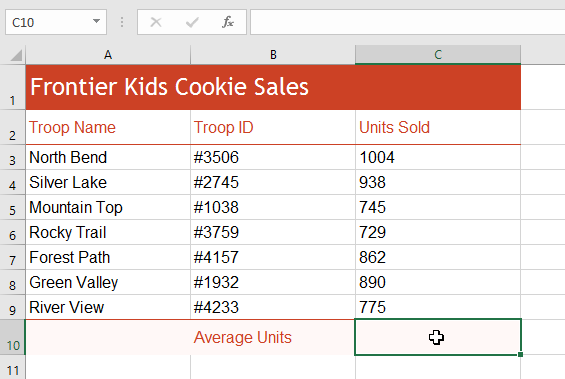
Returns the nth, or ranked, member in a set. Use to validate that a member name exists within the cube and to return the specified property for this member. Returns the value of a member property from the cube. Use to validate that the member or tuple exists in the cube. A KPI is a quantifiable measurement, such as monthly gross profit or quarterly employee turnover, that is used to monitor an organization's performance. Returns a key performance indicator (KPI) property and displays the KPI name in the cell. Returns the one-tailed probability-value of a z-test Returns the probability associated with a Student's t-testĬalculates variance based on the entire population Returns the inverse of the Student's t-distribution Returns the rank of a number in a list of numbersĮstimates standard deviation based on a sampleĬalculates standard deviation based on the entire population Returns the percentage rank of a value in a data set Returns the k-th percentile of values in a range Returns the inverse of the standard normal cumulative distribution Returns the standard normal cumulative distribution Returns the inverse of the normal cumulative distribution Returns the normal cumulative distribution Returns the negative binomial distribution Returns the most common value in a data set Returns the cumulative lognormal distribution Returns the inverse of the lognormal cumulative distribution function Returns the inverse of the gamma cumulative distribution Returns the inverse of the F probability distributionĬalculates, or predicts, a future value by using existing values. Returns the smallest value for which the cumulative binomial distribution is less than or equal to a criterion value Returns covariance, the average of the products of paired deviations Returns the confidence interval for a population mean Joins two or more text strings into one string Returns the inverse of the one-tailed probability of the chi-squared distribution Returns the one-tailed probability of the chi-squared distribution Returns the individual term binomial distribution probability Returns the inverse of the cumulative distribution function for a specified beta distribution Returns the beta cumulative distribution function If you're using Excel 2007, you'll find these functions in the Statistical or Math & Trig categories on the Formulas tab. For more information about the new functions, see Statistical functions (reference) and Math and trigonometry functions (reference). You can still use them for compatibility with earlier versions of Excel, but if backward compatibility isn't required, you should start using the new functions instead. In Excel 2010 or later, these functions were replaced with new functions that provide improved accuracy and have names that better reflect their usage. Use this function to return a value or the reference to a value from within a table or range. They return the number of the starting position of the first text string from the first character of the second text string. Use this function to return the number of days between two dates.įIND and FINDB locate one text string within a second text string. Use the DATEDIF function to calculate the number of days, months, or years between two dates. For example, you might have a worksheet that contains dates in a format that Excel does not recognize, such as YYYYMMDD. This function is most useful in situations where the year, month, and day are supplied by formulas or cell references.
#EXCEL 2016 FUNCTIONS LIST SERIAL NUMBER#
Use this function to return the sequential serial number that represents a particular date. For example, if value1 through value7 are the days of the week, CHOOSE returns one of the days when a number between 1 and 7 is used as index_num.

Use this function to select one of up to 254 values based on the index number. For example, if the range A1:A3 contains the values 5, 7, and 38, then the formula =MATCH(7,A1:A3,0) returns the number 2, because 7 is the second item in the range. Use this function to search for an item in a range of cells, and then return the relative position of that item in the range. Check out this video about using VLOOKUP.


For example, look up an employee's last name by her employee number, or find her phone number by looking up her last name (just like a telephone book). Use this function when you need to find things in a table or a range by row. Use this function when you need to look in a single row or column and find a value from the same position in a second row or column. Here's a video about using the IF function. Use this function to return one value if a condition is true and another value if it's false. Use this function to add the values in cells. Here are the 10 functions that people read about most.


 0 kommentar(er)
0 kommentar(er)
